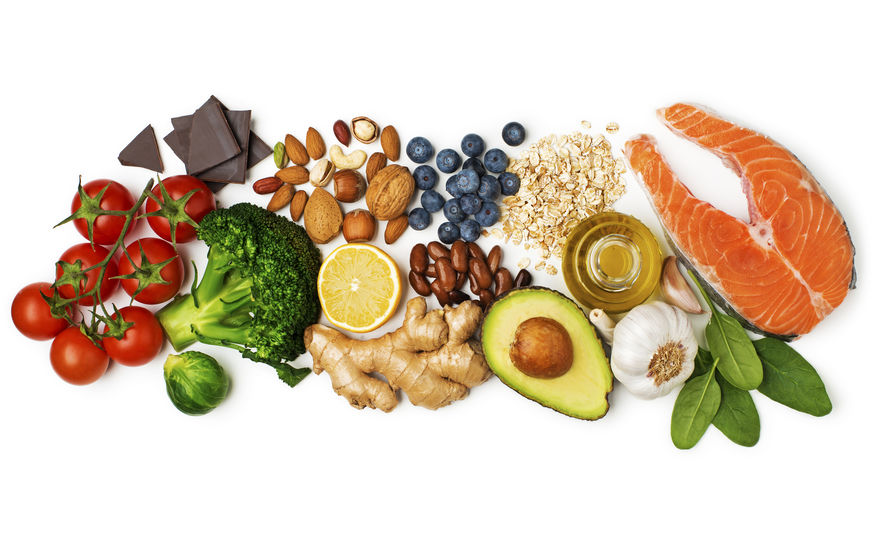A balanced diet meal plan includes foods from five groups and fulfills all of a person’s nutritional needs. Eating a balanced diet helps people maintain good health and reduce their risk of disease.
Dietary guidelines evolve with scientific advances, so it can be challenging to stay on top of current recommendations and know what to eat.
What is a Balanced Diet Meal Plan?
A balanced diet meal plan is one that fulfills all of a person’s nutritional needs. Humans need a certain amount of calories and nutrients to stay healthy.
A balanced diet provides all the nutrients a person requires, without going over the recommended daily calorie intake.
By eating a balanced diet, people can get the nutrients and calories they need and avoid eating junk food, or food without nutritional value.
USDA Recommendations for a Balanced Diet Meal Plan
This is the recommendation for a balanced diet meal plan:
The United States Department of Agriculture (USDA) used to recommend following a food pyramid. However, as nutritional science has changed, they now recommend eating foods from the five groups and building a balanced plate.
According to the USDA’s recommendations, half of a person’s plate should consist of fruits and vegetables.
The other half should be made up of grains and protein. They recommend accompanying each meal with a serving of low-fat dairy or another source of the nutrients found in dairy.
The 5 Food Groups
A healthful, balanced diet includes foods from these five groups:
- vegetables
- fruits
- grains
- protein
- dairy
Vegetables
The vegetable group includes five subgroups:
- leafy greens
- red or orange vegetables
- starchy vegetables
- beans and peas (legumes)
- other vegetables, such as eggplant or zucchini
To get enough nutrients and keep dietary boredom at bay, people should choose a variety of vegetables. Additionally, the USDA recommend that people eat vegetables from each of the five subgroups every week.
People may enjoy vegetables raw or cooked. However, it is important to remember that cooking vegetables removes some of their nutritional value. Also, some methods, such as deep-frying, can add unhealthful fats to a dish.
Fruits
A balanced diet also includes plenty of fruit. Instead of getting fruit from juice, nutrition experts recommend eating whole fruits.
Juice contains fewer nutrients. Also, the manufacturing process often adds empty calories due to added sugar. People should opt for fresh or frozen fruits, or fruits canned in water instead of syrup.
Grains
There are two subgroups: whole grains and refined grains.
Whole grains include all three parts of the grain, which are the bran, germ, and endosperm. The body breaks down whole grains slowly, so they have less effect on a person’s blood sugar.
Additionally, whole grains tend to contain more fiber and protein than refined grains.
Refined grains are processed and do not contain the three original components. Refined grains also tend to have less protein and fiber, and they can cause blood sugar spikes.
Grains used to form the base of the government-approved food pyramid, meaning that most of a person’s daily caloric intake came from grains. However, the updated guidelines suggest that grains should make up only a quarter of a person’s plate.
At least half of the grains that a person eats daily should be whole grains. Healthful whole grains include:
- quinoa
- oats
- brown rice
- barley
- buckwheat
Protein
The 2015–2020 Dietary Guidelines for Americans state that all people should include nutrient-dense protein as part of their regular diet.
The guidelines suggest that this protein should make up a quarter of a person’s plate.
Nutritious protein choices include:
- lean beef and pork
- chicken and turkey
- fish
- beans, peas, and legumes
Dairy
Dairy and fortified soy products are a vital source of calcium. The USDA recommend consuming low-fat versions whenever possible. Low-fat dairy and soy products include:
- ricotta or cottage cheese
- low-fat milk
- yogurt
- soy milk
People who are lactose intolerant can opt for low-lactose or lactose-free products, or choose soy-based sources of calcium and other nutrients.
Losing weight
A poor diet is a common reason why people struggle with weight loss. When combined with a regular exercise routine, a balanced diet can help a person reduce their risk factors for obesity or gaining weight.
A balanced diet can help a person lose weight by:
- increasing their protein intake
- avoiding excessive carbohydrates or processed foods
- getting essential nutrients, including minerals, vitamins, and fiber
- preventing binge eating
People interested in losing weight should begin or enhance an exercise routine.
For some people, adding 30 minutes of walking each day and making minor changes, such as taking the stairs, can help them burn calories and lose weight. For those that can, adding moderate exercise that includes cardio and resistance training will help speed weight loss.
Balanced Diet Meal Plan Summary
Eating a balanced diet means eating foods from the five major groups.
Dietary guidelines change over time, as scientists discover new information about nutrition. Current recommendations suggest that a person’s plate should contain primarily vegetables and fruits, some lean protein, some dairy, and soluble fiber.
People interested in weight loss should also consider introducing moderate exercise into their routines.
Click here for all the detailed about a balanced diet meal plan.






